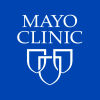预约演示
更新于:2025-05-07
SLC12A4
更新于:2025-05-07
基本信息
别名 Electroneutral potassium-chloride cotransporter 1、Erythroid K-Cl cotransporter 1、hKCC1 + [4] |
简介 Mediates electroneutral potassium-chloride cotransport when activated by cell swelling (PubMed:35759661). May contribute to cell volume homeostasis in single cells (PubMed:10913127, PubMed:34031912). May be involved in the regulation of basolateral Cl(-) exit in NaCl absorbing epithelia (By similarity).
No transporter activity. |
关联
2
项与 SLC12A4 相关的药物作用机制 NKCC1抑制剂 [+2] |
在研机构 |
非在研适应症 |
最高研发阶段批准上市 |
首次获批国家/地区 日本 |
首次获批日期1976-04-08 |
作用机制 MIF抑制剂 [+8] |
在研机构- |
原研机构 |
在研适应症- |
非在研适应症 |
最高研发阶段无进展 |
首次获批国家/地区- |
首次获批日期1800-01-20 |
50
项与 SLC12A4 相关的临床试验NCT06941415
Bumetanide vs. Furosemide for Adults Hospitalized With Cirrhosis: the BUFF Trial
Patients with cirrhosis are frequently hospitalized due to an acute decompensation of their liver disease including bleeding, jaundice, encephalopathy, and volume overload. Volume overload is associated with increased mortality from acute hypoxic respiratory failure, hemorrhage from esophageal varices, and spontaneous bacterial peritonitis.
Clinical practice guidelines describe sodium restriction and diuretics as first-line treatment, combined with regular body weight monitoring to assess response. In patients with suboptimal response to furosemide, alternative loop diuretics like torsemide or bumetanide may improve natriuresis. Bumetanide has a theoretic advantage over furosemide due to its more rapid and complete intestinal absorption, combined with a prolonged half-life in patients with hepatic dysfunction. In this pragmatic study, the aim is to compare the efficacy of diuresis with bumetanide versus furosemide among hospitalized patients with cirrhosis.
Clinical practice guidelines describe sodium restriction and diuretics as first-line treatment, combined with regular body weight monitoring to assess response. In patients with suboptimal response to furosemide, alternative loop diuretics like torsemide or bumetanide may improve natriuresis. Bumetanide has a theoretic advantage over furosemide due to its more rapid and complete intestinal absorption, combined with a prolonged half-life in patients with hepatic dysfunction. In this pragmatic study, the aim is to compare the efficacy of diuresis with bumetanide versus furosemide among hospitalized patients with cirrhosis.
开始日期2025-07-01 |
申办/合作机构 |
CTR20240307
中国健康受试者单次口服布美他尼片(1mg)的开放、随机、单剂量、两制剂、单次给药、交叉设计的生物等效性试验
主要研究目的
研究空腹和餐后单次口服布美他尼片受试制剂(规格:1mg,新乡市常乐制药有限责任公司生产,浙江和沐康医药科技有限公司提供)与布美他尼片参比制剂(Burinex®,规格:1mg,Karo Pharma AB持证,浙江和沐康医药科技有限公司提供)在中国健康受试者体内的药代动力学行为,评价空腹及餐后口服两种制剂的生物等效性。
次要研究目的
评价中国健康受试者空腹和餐后单次口服受试制剂(T)布美他尼片和参比制剂(R)布美他尼片(Burinex®)后的安全性。
开始日期2024-02-27 |
申办/合作机构 |
NCT06036914
Ultra High Dose Diuretic Strategy for Management of Acute Decompensated Heart Failure - A Randomized, Double-Blind Pilot Trial
The purpose of this study is to determine the safety and effectiveness of ultrahigh dose diuretics compared to standard dose diuretics over 24 hours in patients with decompensated heart failure.
开始日期2023-11-27 |
申办/合作机构 |
100 项与 SLC12A4 相关的临床结果
登录后查看更多信息
100 项与 SLC12A4 相关的转化医学
登录后查看更多信息
0 项与 SLC12A4 相关的专利(医药)
登录后查看更多信息
156
项与 SLC12A4 相关的文献(医药)2024-09-01·Animal Bioscience
Genome-wide association research on the reproductive traits of Qianhua Mutton Merino sheep
Article
作者: Li, Jiarong ; Sun, Jiazhi ; Sun, Limin ; Jiang, Huaizhi
2024-07-01·Acta Pharmaceutica Sinica B
Gut commensal metabolite rhamnose promotes macrophages phagocytosis by activating SLC12A4 and protects against sepsis in mice
Article
作者: Zhou, Hongwei ; Wan, Yantong ; Gong, Shenhai ; Hong, Yinghao ; Chen, Peng ; Zhang, Xianglong ; Zeng, Zhenhua ; Gu, Peng ; Wang, Fangzhao ; Li, Jiaxin ; Jiang, Yong ; Li, Dongping ; Wan, Meijuan ; Chen, Meiling ; Selva Nandakumar, Kutty ; Liu, Ruofan ; Wei, Rongjuan ; Wang, Zhang
2023-12-01·Journal of Pharmaceutical Analysis
The role of SLC12A family of cation-chloride cotransporters and drug discovery methodologies
Review
作者: Dai, Cuilian ; Zhou, Xiaoxia ; Li, Zhengqiu ; Liang, Dong ; Wang, Yan ; Josiah, Sunday Solomon ; Meor Azlan, Nur Farah ; Wang, Yun ; Li, Peifeng ; Zhang, Shiyao ; Wang, Zhen ; Zhang, Jinwei ; Ding, Ke ; Jie, Lingjun ; Zhang, Yanhui ; Zhou, Jing
1
项与 SLC12A4 相关的新闻(医药)2024-12-09
·学术经纬
▎药明康德内容团队编辑
结直肠癌(CRC)是全球第三大常见癌症,其死亡率不断上升。美国FDA已批准使用免疫检查点抑制剂(ICI)治疗CRC,包括PD-1抑制剂,然而超过85%具有pMMR/MSS特征的患者几乎无法从中受益。
癌细胞具有高度的代谢状态,依赖外源性丝氨酸、甘氨酸及其他氨基酸来支持其发起、增殖、转移和抵抗。这一过程主要由厌氧糖酵解驱动,产生大量的乳酸,从而营造了一种免疫抑制的微环境。因此,深入研究肿瘤代谢物如乳酸、限制外部营养素如氨基酸在癌症进展中的功能和作用及其对肿瘤微环境的影响至关重要。然而,目前关于乳酸等肿瘤代谢物及限制氨基酸对肿瘤的作用机制尚未完全阐明。
2024年12月3日,四川大学华西医院马学磊/石虎兵团队联合术康集团雷震博士团队在Cell Metabolism发表研究论文Dual Impacts of Serine/Glycine Free Diet in Enhancing Antitumor Immunity and Promoting Evasion via PD-L1 Lactylation,系统地阐述了外源性限制丝/甘氨酸饮食对结直肠癌抗瘤、免疫逃逸的动态影响。
具体而言,限制丝/甘氨酸饮食通过重塑肿瘤微环境,调节肿瘤细胞表面MHC I表达,利于激活CD8+ T细胞,增强T细胞的增殖能力及细胞毒性,增强抗瘤能力。然而,在CD8+ T细胞与肿瘤细胞相互斗争的过程中,肿瘤细胞通过上调GCN5,促进其PD-L1发生乳酸化,减弱溶酶体对PD-L1的降解,从而上调肿瘤细胞表面PD-L1的水平,进而使肿瘤细胞逃避CD8+ T细胞的攻击。因此,阻断肿瘤细胞表面PD-L1与CD8+ T细胞表面PD-1的结合,有利于进一步增强剥夺丝/甘氨酸饮食的治疗效果。
▲研究示意图(图片来源:参考资料[1])
基于基础研究取得良好成效,四川大学华西医院马学磊副教授团队与成都尚医信息科技有限公司·术康雷震博士团队共同研发了丝/甘氨基酸剥夺饮食产品(专利号:CN114947139A),并合作开展了该产品的I期临床试验(试验号ChiCTR2300067929),这是国际上首个取得成功的氨基酸代谢产品的临床试验,初步证明了该疗法的安全性和潜在有效性。
同时本篇文章被选为Cell Metabolism封面文章。封面设计灵感来源于希腊神话,描绘了雅典娜女神与一个巨大的肿瘤细胞战斗。她戴着-SG饮食的盾牌,使肿瘤细胞的眼睛(MHC-I)对CD8+ T细胞更加突出,而她的猫头鹰(PD-1抑制剂)以PD-L1为靶点,削弱了肿瘤细胞的防御,象征着协同治疗的增强。
▲Cell Metabolism封面图(图片来源:研究团队提供)
该研究主要对结直肠癌CT26细胞体外、体内实验探索-SG饮食的抗瘤作用,分别研究-SG饮食对肿瘤微环境及肿瘤细胞的影响,进一步探索-SG饮食与PD-1抑制剂的协同作用。基于基础研究,开展1项I期单臂临床研究,初步探索-SG饮食的安全性及临床可行性。
在这项研究中,研究人员通过对结直肠癌CT26细胞分别进行体外、体内实验,发现缺乏丝/甘氨酸(-SG)显著抑制肿瘤生长,同时通过免疫组化发现-SG会促进肿瘤发生免疫原性死亡。值得注意的是,研究团队在动物实验中发现:-SG饮食会显著降低血清中丝氨酸和甘氨酸的水平,但对小鼠体重几乎无影响。为进一步证实-SG饮食抗瘤作用的普适性,研究人员进一步在多种小鼠模型中进行验证,证实了-SG饮食在多种不同肿瘤模型中均具有显著的抗瘤作用。
▲饮食中丝/甘氨酸的限制会抑制结直肠癌的生长,并促进肿瘤的免疫原性死亡(图片来源:研究团队提供)
鉴于肿瘤微环境(TME)是癌症发生、发展和免疫逃逸的重要因素,研究人员通过对-SG和Control饮食处理过的CT26皮下瘤进行单细胞测序(scRNA-seq),发现-SG饮食显著改变了肿瘤内的免疫细胞组成,尤其是增加了淋巴细胞(T细胞和B细胞)的浸润。同时,基因集富集分析(GSEA)显示,淋巴细胞分化和活化通路上调,表明免疫功能的增强,揭示了-SG饮食重塑TME,激发更强的抗肿瘤免疫反应的潜力。
为进一步确定何种免疫细胞在-SG饮食中起关键作用,研究人员通过清除单细胞测序发现的不同免疫细胞,发现CD8+T细胞是-SG饮食发挥抗肿瘤作用的关键细胞。具体表现为清除CD4+T、巨噬细胞后,肿瘤生长曲线、肿瘤质量与未清除组未发生明显改变,而清除CD8+T细胞后,肿瘤体积和质量显著增加。
鉴于-SG饮食降低血清丝氨酸和甘氨酸水平,为探索是否是其转运入CD8+T细胞内的丝/甘氨酸水平降低,影响CD8+T细胞的功能,研究人员通过将CD8+T细胞、敲低丝氨酸转运体SLC12A4的CD8+T细胞重新回入裸鼠,回输CD8+T细胞的抗肿瘤活性较回输敲低丝氨酸转运体SLC12A4的CD8+T细胞的抗瘤能力更强,提示-SG饮食依赖大量增加的CD8+T细胞增强抗瘤作用,同时,在一定程度上又可能削弱CD8+T细胞的功能。但整体而言,CD8+T细胞是-SG饮食抗肿瘤免疫的重要参与细胞。
鉴于-SG饮食对CD8+T细胞可能存在双向作用,整体效果表现为利大于弊,研究人员进一步研究了-SG饮食是否对肿瘤细胞产生双向作用。他们发现-SG饮食会轻微上调肿瘤细胞表面MHC-I分子表达,提高抗原呈递能力;同时还显著增强了肿瘤局部T细胞受体(TCR)的多样性和克隆扩增能力,使得T细胞能够识别更多肿瘤抗原,增强其对肿瘤细胞的免疫攻击。然而,研究也发现,在CD8+T细胞的持续攻击下,肿瘤细胞上调了程序性死亡配体1(PD-L1)的表达,实现肿瘤免疫逃逸。总的来说,尽管-SG饮食虽能显著增强抗瘤免疫,但其抗瘤效果可能受到PD-1/PD-L1通路的限制。
为进一步研究肿瘤细胞PD-L1表达升高的机制,研究人员进一步揭示了肿瘤细胞通过乳酸化修饰稳定PD-L1表达。具体来说,-SG饮食增加肿瘤组织的糖酵解水平,增加血清肌肿瘤组织中乳酸浓度,促进了肿瘤细胞PD-L1发生乳酸化修饰,延缓溶酶体对其降解,从而延长其在细胞表面的表达时间。此外,研究人员还确定了PD-L1在酰基转移酶GCN5的作用下,将乳酸基团转移至PD-L1 DNA序列810-813编码的赖氨酸残基上。通过突变乳酸化位点或直接敲除PD-L1,研究人员证实了PD-L1乳酸化在促进免疫逃逸中的关键作用,提示阻断PD-L1乳酸化可能成为一个新的治疗靶点。
尽管微卫星稳定(MSS)的结直肠癌通常对免疫检查点抑制剂(ICI)疗效不佳,但鉴于-SG饮食上调肿瘤细胞表面PD-L1水平,研究人员为探索-SG饮食是否能通过调节肿瘤及其微环境来提高对PD-1抑制剂的反应性。研究人员在小鼠模型中联用-SG饮食和PD-1抑制剂,发现二者联用可显著抑制肿瘤生长,增加肿瘤局部CD3+和CD8+T细胞的浸润水平。提示-SG饮食可显著提高MSS结直肠癌对PD-1抑制剂的敏感性。
基于动物实验令人兴奋的研究结果,研究人员进一步开展了一项单臂、I期临床试验。在中期结果中,研究人员评估了28名晚期实体瘤患者,最终20名患者纳入进此项临床研究,接受-SG营养粉作为日常饮食。研究人员发现-SG饮食相关的不良事件是胃肠道反应,主要表现为腹泻,但可通过常规对症治疗得到控制。在完成每个周期的-SG治疗后,评估其对血常规、肝肾功、体重指数、患者生活质量等的影响,均显示该疗法具有良好的安全性,未见严重副作用。其次,初步疗效评估显示,部分患者肿瘤负荷减轻,循环免疫指标有所改善。这一临床试验为-SG饮食后续的转化研究、联合免疫治疗的临床应用奠定了基础。
综上,研究人员通过单细胞转录组分析及实验证实了-SG饮食在调控抗肿瘤免疫以及介导肿瘤免疫逃逸中的双重潜力,提出增效MSS结直肠癌PD-1抑制剂疗效的新策略,可为结直肠癌及其他实体瘤的综合治疗提供一个新思路。
作者介绍
本文第一通讯作者马学磊副教授,四川大学华西医院生物治疗科副主任、副主任医师、副教授、硕士/博士研究生导师,第十四批四川省学术和技术带头人后备入选、“天府青城计划”青年科技人才、四川省“卫生健康英才计划”中青年骨干人才。专攻于肿瘤转录组学和生物信息研究,及肿瘤诊断的新方法研究和人工智能识别技术的医疗应用。主持国家自然科学基金面上项目2项,国家自然科学基金青年项目1项,四川省科技厅项目2项。近五年以第一或通讯作者发表SCI收录论著200余篇,发表在如Cancer Cell 1篇(IF:48.8),Signal Transduct Target Ther 4篇(IF:40.8),Cell Discovery 1篇(IF:13),Drug Resistance Updates 1篇(IF:15.8),Seminars in cancer biology 4篇(IF:12.1)等。5年累计引用次数8000余次,论著被 NCCN,WFUMB guidelines,The EFSUMB guidelines 等国际顶尖指南引用 12余次。欢迎优秀学子加入(临床和基础均招收),招生专用邮箱 mxlmax@163.com。
参考资料:
[1] Tong et al., Dual impacts of serine/glycine-free diet in enhancing antitumor immunity and promoting evasion via PD-L1 lactylation. Cell (2024). https://doi.org/10.1016/j.cmet.2024.10.019
本文来自药明康德内容微信团队,欢迎转发到朋友圈,谢绝转载到其他平台。如有开设白名单需求,请在“学术经纬”公众号主页回复“转载”获取转载须知。其他合作需求,请联系wuxi_media@wuxiapptec.com。
免责声明:药明康德内容团队专注介绍全球生物医药健康研究进展。本文仅作信息交流之目的,文中观点不代表药明康德立场,亦不代表药明康德支持或反对文中观点。本文也不是治疗方案推荐。如需获得治疗方案指导,请前往正规医院就诊。
更多推荐
点个“在看”再走吧~
临床1期免疫疗法
分析
对领域进行一次全面的分析。
登录
或

生物医药百科问答
全新生物医药AI Agent 覆盖科研全链路,让突破性发现快人一步
立即开始免费试用!
智慧芽新药情报库是智慧芽专为生命科学人士构建的基于AI的创新药情报平台,助您全方位提升您的研发与决策效率。
立即开始数据试用!
智慧芽新药库数据也通过智慧芽数据服务平台,以API或者数据包形式对外开放,助您更加充分利用智慧芽新药情报信息。
生物序列数据库
生物药研发创新
免费使用
化学结构数据库
小分子化药研发创新
免费使用




